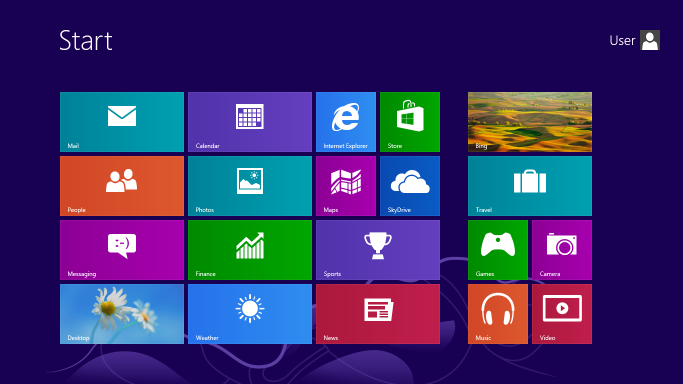Windows 8.1
| A version of the Windows NT operating system | |

Windows 8 Start screen
| |
| Developer | Microsoft |
|---|---|
| Source model | Closed source and shared source |
| Released to manufacturing | August 1, 2012 |
| General availability | October 26, 2012 |
| Update method | Windows Update, Windows Store, Windows Server Update Services |
| Platforms | IA-32, x64 |
| Kernel type | Hybrid |
| License | Trialware, Microsoft Software Assurance, MSDN subscription, DreamSpark |
| Preceded by | Windows 7 (2009) |
| Succeeded by | Windows 8.1 (2013) |
| Official website | windows |
| Support status | |
| Unsupported as of January 12, 2016, must install Windows 8.1 in order to continue receiving updates and support. | |
| Part of a series on |
| Windows 8 |
|---|
Windows 8 is a personal computer operating system developed by Microsoft as part of the Windows NT family of operating systems. Development of Windows 8 started before the release of its predecessor, Windows 7, in 2009. It was announced at CES 2011, and followed by the release of three pre-release versions from September 2011 to May 2012. The operating system was released to manufacturing on August 1, 2012, and was released for general availability on October 26, 2012.
Windows 8 introduced major changes to the operating system's platform and user interface to improve its user experience on tablets, where Windows was now competing with mobile operating systems, including Android and iOS.[6] In particular, these changes included a touch-optimized Windows shell based on Microsoft's "Metro" design language, the Start screen(which displays programs and dynamically updated content on a grid of tiles), a new platform for developing "apps" with an emphasis on touchscreen input, integration with online services (including the ability to synchronize apps and settings between devices), and Windows Store, an online store for downloading and purchasing new software. Windows 8 added support for USB 3.0, Advanced Format hard drives, near field communications, and cloud computing. Additional security features were introduced, such as built-in antivirus software, integration with Microsoft SmartScreen phishing filteringservice and support for UEFI Secure Boot on supported devices with UEFI firmware, to prevent malware from infecting the boot process.
Windows 8 was released to a mixed critical reception. Although reaction towards its performance improvements, security enhancements, and improved support for touchscreen devices was positive, the new user interface of the operating system was widely criticized for being potentially confusing and difficult to learn, especially when used with a keyboard and mouse instead of a touchscreen. Despite these shortcomings, 60 million Windows 8 licenses were sold through January 2013, a number that included both upgrades and sales to OEMs for new PCs.
On October 17, 2013, Microsoft released Windows 8.1. It addressed some aspects of Windows 8 that were criticized by reviewers and early adopters and incorporated additional improvements to various aspects of the operating system.Windows 8 was ultimately succeeded by Windows 10 in July 2015. Support for Windows 8 RTM ended on January 12, 2016, per Microsoft lifecycle policies regarding service packs, Windows 8.1 must be installed to maintain support and receive further updates.








